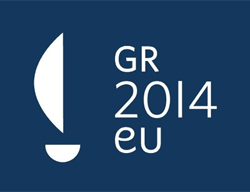Research and Innovation
The legal basis of the Research and Innovation policy are Articles 163 to 173 of the Treaty establishing the European Community.
The European Union produces almost one third of the world's scientific knowledge. Joint programmes consolidate the work of EU countries. The main tool is the Sixth Framework Programme. This funds research in the member states and some other countries, and at the EU's own Joint Research Centre.
Creating a European Research Area
Key EU objectives include increasing research spending by well over 50% in real terms by 2010, thus bringing it to 3% of GDP, and increasing the private sector share of total expenditure to 67% in 2010 (from 56% in 1999). The idea of the ERA is to replace loose cooperation between researchers and research organisations with research programmes integrated across borders and across disciplines.
Funding for research
The European Commission has a budget of some €20 billion for 2002-2006 for building a European Research Area under its Sixth Framework Programme (known as FP6). This is 6% of all public support for civilian research expenditure in the EU. Around three quarters of this budget is devoted to seven priorities:
- genomics and biotechnology for health;
- information society technologies;
- nanotechnologies, intelligent materials and new production processes;
- aeronautics and space;
- food safety and health risks;
- sustainable development;
- economic and social sciences.
Funding goes to projects which will clearly genuinely benefit from a transnational approach. Many countries have cooperation agreements allowing them to benefit from this funding, but generally at least two of the participants must come from EU member states, candidate countries or Switzerland. The grant covers between 25% and 100% of the cost.
The Joint Research Centre
Well over 5% of the FP6 budget is destined for the Joint Research Centre (JRC), the European Union's own network of seven research units located across the EU. These provide EU policymakers with sound scientific data on which to base decisions, particularly in the areas of food, chemicals and health; environment and sustainable development; and nuclear safety and safeguards. The JRC also has expertise in technical forecasting, reference materials and measurements, and protection of the public from economic and technological risk.
Nuclear fusion and fission
Seven per cent of the budget goes on research into nuclear energy. Of the nuclear research budget, 60% is earmarked for research into nuclear fusion, an environmentally friendly but technologically very difficult alternative to nuclear fission which does not use radioactive materials. The EU is working with Canada, China, Japan, Korea, the United States and Russia through the ITER project on plans for the first nuclear fusion device to produce as much electricity as a normal power station.
Research into renewable energy and efficient use of energy is funded separately, from the sustainable development budget of FP6.
The next frontiers?
At the moment, European governments cooperate in space technology, but not under an EU umbrella. There is a co-operation programme with the European Space Agency covering launchers and areas such as communication by satellite, human space flight and micro-gravity, but the EU is planning to go further with a space programme of its own in future.
With the United States and a number of other countries, the EU is working on the next generation of satellite global positioning systems, through the EU-led Galileo project. These systems can be used for a wide range of applications from more efficient traffic management to determining the exact timing of bank transactions.






 Svejo
Svejo Twitter
Twitter Link4e
Link4e Pipe
Pipe Web-bg
Web-bg Bghot
Bghot Lubimi
Lubimi Novinitednes
Novinitednes Ping
Ping Facebook
Facebook Myspace
Myspace Mix
Mix Del.ico.us
Del.ico.us Reddit
Reddit Digg
Digg Stumbleupon
Stumbleupon Myweb Yahoo
Myweb Yahoo Google Bookmarks
Google Bookmarks Google Buzz
Google Buzz

